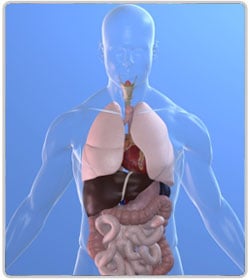- Definition & Facts of Hemorrhoids - (https://www.niddk.nih.gov/health-information/digestive-diseases/hemorrhoids/definition-facts)
- Enlarged Hemorrhoids: How can You Relieve the Symptoms Yourself? - (https://www.ncbi.nlm.nih.gov/books/NBK279466/)
- Hemorrhoids - Overview - (https://www.aafp.org/afp/2011/0715/p204.html#sec-2)
- Hemorrhoids: From Basic Pathophysiology to Clinical Management - (https://www.ncbi.nlm.nih.gov/pmc/articles/PMC3342598/)
How can Hemorrhoids be Prevented & Treated?
Stool softeners, topical pain-relieving creams, suppositories and Sitz baths help relieve pain due to hemorrhoids.
The best treatment of hemorrhoids is prevention. This is possible to some extent by maintaining a proper diet and preventing straining while passing stools.
If the pain is not too severe, conservative management consisting of stool softeners, topical pain-relieving creams and Sitz baths (sitting in a tub or bathtub of warm water) may suffice.
Medical or Conservative management of hemorrhoids include:
Toilet habits - The best way to prevent hemorrhoids is to keep stools soft so that they pass easily, thus decreasing pressure and straining, and to empty bowels as soon as possible after the urge occurs.
Administration of anti-inflammatory drugs to manage the pain. Avoid taking pain-killers that contain codeine as it is a common cause of constipation.
Fiber supplements - Taking fiber supplements such as Isabgol, methylcellulose or bran can help soften stools.
Physical Activity - Regular exercise helps with painful piles
Avoid sitting or standing for long periods as it can increase the pressure on the veins in the anus.
Topical pain-relieving creams and ointments can be used to help relieve the irritation and pain of relatively minor hemorrhoids. A cream containing an anesthetic may ease pain better. Creams or ointments containing a steroid may be advised if there is a lot of inflammation around the hemorrhoids.
Cleaning the peri-anal area with mild, unscented soap and water after each bowel movement can reduce swelling and itching.
Hemorrhoids that bleed can be treated by various non- surgical methods or by surgical excision.
High fiber diet - A diet high in fiber and bulk can prevent constipation. Include whole grains, fruits, green and yellow vegetables in the diet and increase the fluid intake.(5✔ ✔Trusted Source
Enlarged Hemorrhoids: How can You Relieve the Symptoms Yourself?
Go to source)

Non surgical methods:
1. Band ligation
Rubber band ligation is a procedure in which a small rubber band is placed at the base of the internal hemorrhoid with a special applicator through the proctoscope.
The rubber band cuts off the blood supply to the hemorrhoid and the hemorrhoid falls off in about four to five days.
2. Laser Coagulation
This technique involves the use of laser beam to burn the hemorroidal tissue. Laser coagulation does not involve the use of any anesthesia during the procedure. This method helps patient to have a speedy recovery.
3. Infrared coagulation or photocoagulation
Infrared coagulation uses an infrared light source to coagulate the dilated veins of the hemorrhoid. This causes the hemorrhoids to shrink since blood does not flow through the coagulated blood vessels.
4. Injection Sclerotherapy
Injection sclerotherapy of hemorrhoids involves injecting a sclerosing agent into the hemorrhoid which causes inflammation and closure of the veins, thereby shrinking the hemorrhoid.(6✔ ✔Trusted Source
Hemorrhoids - Overview
Go to source, 4✔ ✔Trusted Source
Definition & Facts of Hemorrhoids
Go to source)
5. Bipolar Diathermy and Direct Current Electrotherapy treatment
This technique is used for the treatment of grade 3 and grade 4 hemorrhoids. It involves the use of heat energy to destroy the piles.
Current passes from one electrode to the body tissue and returns back through another electrode. The heat produced coagulates the bleeding blood vessels and destroys the hemorrhoids. This technique appears to be successful in the treatment of piles as the risk for complications is also low.
Surgical Procedures
There are various procedures available and include:
It is a surgical procedure that is performed for the removal of large external and internal hemorrhoids. These are usually present in 3 locations and all three are removed and ligated.

2. Stapled hemorrhoidopexy
This technique is useful for the treatment of prolapsed hemorrhoids. Stapled hemorrhoidopexy involves the use of a circular stapling gun to cut out the lining of the anal canal above the piles. This effect of pulling the piles back will allow it to shrink by reducing the blood supply.
3. Hemorrhoidal Artery Ligation
It involves the use of a specific ultrasound probe which identifies the blood vessels that feed hemorrhoids. The blood supply to the hemorrhoids is cut off.(7✔ ✔Trusted Source
Hemorrhoids: From Basic Pathophysiology to Clinical Management
Go to source)
Complications of Hemorrhoid Surgery
- Persistent Bleeding
- Pain and difficulty in urination
- Narrowing of the passage in the body (Stenosis)
- Damage caused to the sphincter muscles and incontinence - this is rare.












